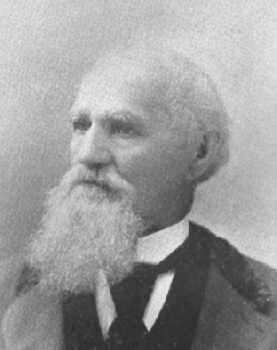John Henry Brown facts for kids
John Henry Brown (born October 29, 1820 – died May 31, 1895) was an important person in Texas history. He was a journalist, a military leader, an author, a politician, and a historian. He served as a state legislator and was the mayor of two cities: Galveston (in 1856) and Dallas, Texas (from 1885 to 1887). John Henry Brown was one of the first people to write detailed histories about Texas and the city of Dallas.
However, since the late 1900s, people have looked at Brown's life and writings more closely. His words and speeches, especially before the Civil War, showed strong racism and unfair treatment towards African Americans. Most African Americans in Texas became free only after the Civil War ended. He also disagreed with people who wanted to end slavery (called abolitionists) and later with white people who supported the newly freed Black people.
Contents
Early Life and Career
John Henry Brown was born in 1820 in Pike County, which was then part of the Missouri Territory. His parents were Henry S. Brown and Margaret (Jones) Brown. He didn't go to school much. Instead, he learned by working in a printer's office and at different newspapers in Missouri when he was young.
When he was 17, Brown moved to the new Republic of Texas. Soon after, he started working for a newspaper in Austin.
Military Service
Brown began his military career in 1840. He was involved in small fights against Native American groups. By 1841, he became a first sergeant. He took part in several battles over the next two years.
In April 1843, Brown went back to Missouri. In July of that year, he married Marion F. Mitchel. They had five children together. In 1845, the family moved to Texas to live. Texas joined the United States as a state in December 1845. In 1846, Brown became a major in the militia of Texas. He also started working in newspapers again that same year.
In 1848, the Brown family moved to Indianola, Texas. There, Brown started a newspaper. He also published many documents about the history of Texas and the Southwest.
Political and Writing Career
In 1854, Brown became an editor at a newspaper in Galveston. That same year, he was elected to the Texas legislature. In 1856, he became the mayor of Galveston. He returned to the state legislature in 1857. After serving another term, he moved to Belton, Texas. He continued to work in both journalism and the military.
As the Civil War was about to begin, Brown was chosen in 1861 to lead the committee that wrote Texas's papers to leave the United States (called secession). He started serving in the Confederate States Army as a private. He rose in rank to major. He worked for Brig. Gen. Benjamin McCulloch and then as an assistant adjutant general for Gen. Henry E. McCulloch.
Because of health problems, Brown went back to Texas in 1863. He served the rest of the war in the Texas militia.
Post-War Life
Brown was not happy when the Union won the war. Like many other Confederates, he moved with his family to Mexico in June 1865. They lived there until 1871. Then, they returned to the U.S. and settled in Dallas.
In 1872, Brown was elected to the Texas state legislature again. He stayed active in politics, holding many state and local jobs. Most notably, he was the mayor of Dallas from 1885 to 1887.
From 1880 until he died in 1895, Brown wrote and edited several books about the history of the region. These books included The History of Dallas County, 1837-1887, The Life and Times of Henry Smith, Indian Wars and Pioneers of Texas, and The History of Texas from 1685 to 1892.
Brown died in Dallas when he was 74 years old. He was buried at Greenwood Cemetery in Dallas.
Legacy and Controversy
A newspaper report about Brown's funeral said that the procession "was one of the longest ever seen in Dallas." Another report four years later said Brown "had a state-wide reputation and probably knew more persons in Texas than any other one man." Brown's important papers are kept in the Texas Hall of State in Dallas's Fair Park.
Some places were named after him: Brown Street, in Dallas's Oak Lawn neighborhood, and John Henry Brown School, an elementary school that opened in 1912 in South Dallas.
School Renaming
During the 1950s, the people living in the school's neighborhood changed. It became mostly African-American families. In 1955, Brown Elementary School was part of Dallas's first legal case about desegregation. An African-American family sued so their children could go to the school. This school was only for white students and was very close to their home. The lawsuit was dismissed at that time. Later, in the 1970s, federal courts ordered schools to desegregate.
Over time, people in the community became upset as they learned about Brown's racist ideas. For example, in 1857, John Henry Brown warned that mixing white and Black races would lead to problems. He even suggested bringing back the slave trade. He claimed that Black people were naturally suited for slavery. He also thought that free Black people were a problem for society. He strongly opposed those who wanted to end slavery, even suggesting harsh punishments for them.
While Brown's racist writings were common among white slaveholders before the Civil War, local Dallas residents did not want their children to attend a school named after such a person. In 1999, the Dallas school board decided to change the name to Billy E. Dade Elementary School. Billy E. Dade was an African-American public-school educator in Dallas. As of 2006, the Dade school was renamed again for use as the Billy E. Dade Middle Learning Center.


